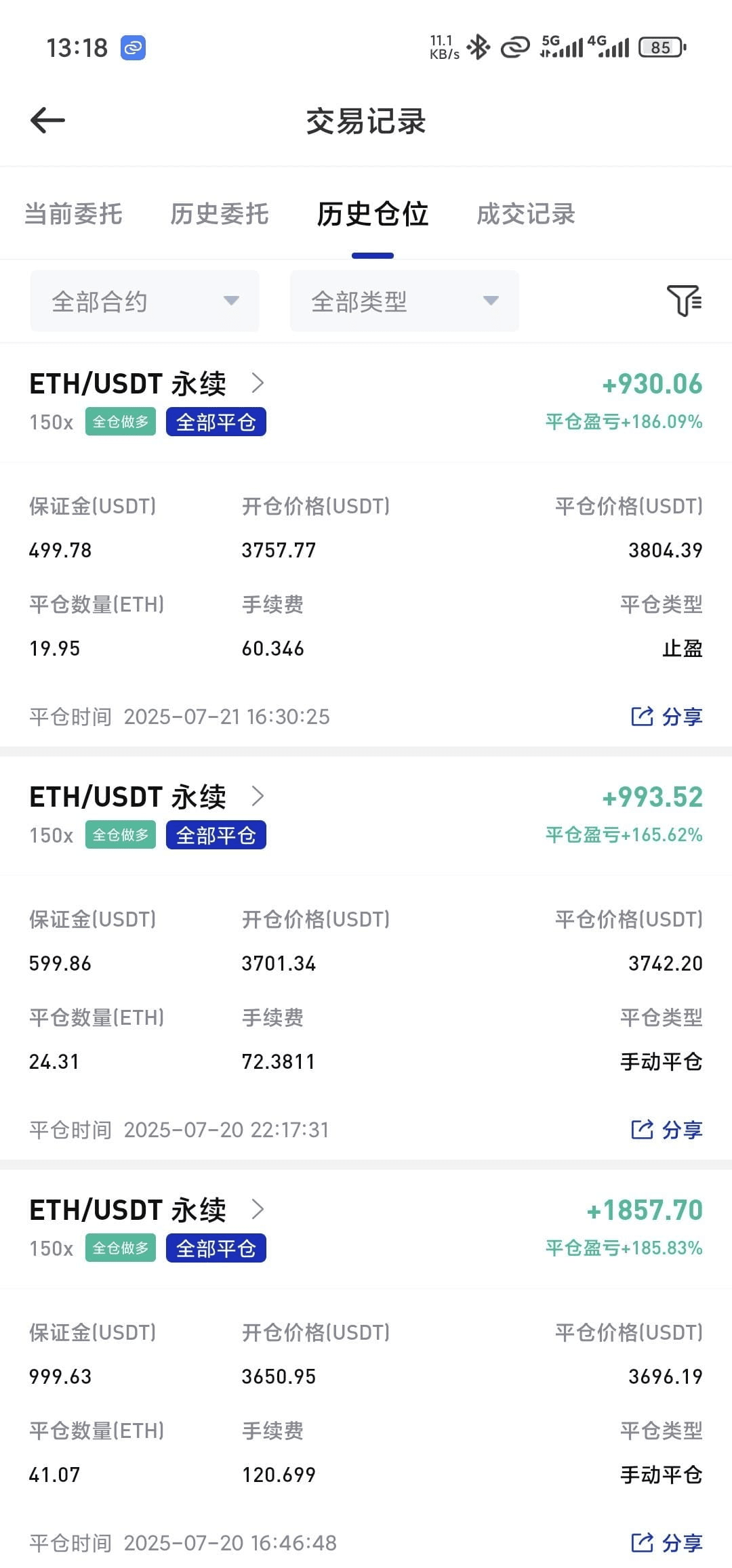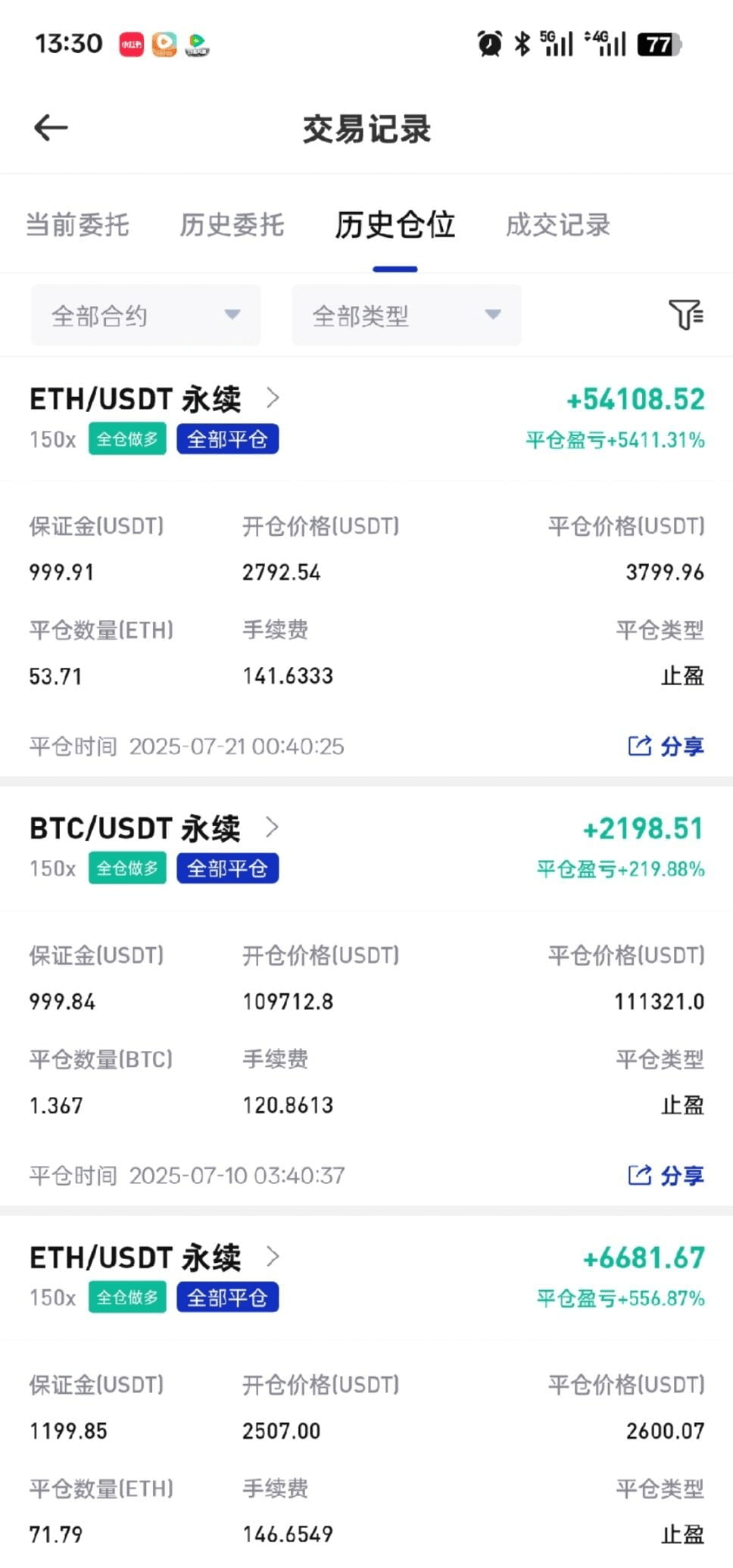I have seen someone turn 5000 into 1 million in half a year, and I have also seen someone make 500,000 one day and lose it all the next — this isn’t a matter of luck, but the execution of the rolling strategy being worlds apart. After four years of practical futures trading, the pitfalls I've encountered could fill a truck, and the tactical summary I've come up with has two key words: 'guard' and 'ruthlessness' — be as steady as Mount Tai when you need to guard, and never hold back when you need to be ruthless.
1. Waiting: 90% of the time is spent waiting, 10% is spent earning.
Newcomers to futures always feel that 'not trading is losing'; they feel uneasy if they don’t open a position in one day. But the people I’ve seen who can make money are 'snipers' — spending 90% of their time lying in wait, waiting for the best opportunity to pull the trigger.
Last year, a fan started with 5,000, trading daily for the first three months, spending over 800 on transaction fees while still incurring a 30% loss. Later, he learned to 'wait for the market' from me and only acted when BTC or ETH showed 'violent market' signs: for example, breaking through key resistance levels or surging over 5%. As a result, in the fourth month, he made 40% on a single trade, equivalent to the previous three months of chaotic trading.
What is a 'violent market'? There are three signals:
Breaking through key levels + increasing volume: BTC hovered at 30,000 for half a month, suddenly a large green candle broke through 32,000, with volume three times that of the previous day — this indicates 'funds are scrambling to accumulate', entering at this time likely results in over 10% fluctuation within 3 days.
Trend driven by news: When major news like the Federal Reserve announcing interest rate cuts or Bitcoin halving comes out, the market often continues for a while. Last year, on the day the Federal Reserve cut rates, I waited 2 hours to confirm the trend, then entered the market and earned 30% in 5 days.
Sector-wide increase: for example, if the DeFi sector rises collectively, with the leading coins up by 10%, and other coins follow — this indicates 'it’s not just a single coin’s market, but rather a sector opportunity', which is safer.
The core of waiting for the market is 'holding back'. I have a timer on my phone, forcing myself to 'open a maximum of 2 positions' a day. Before opening a position, I must watch the K-line for 15 minutes, which suppresses many impulsive trades. Remember: in the futures market, missing 10 opportunities is not scary; what’s scary is one impulsive move that wipes out the principal.
2. Roll: use profits to roll, the principal is always a 'safety cushion'.
'Adding positions after making money' is a fatal flaw for futures novices. I once made 50% on ETH, and in a moment of excitement, I added all my principal and profits, only to see the market reverse, losing not only my profits but also 20% of my principal. It wasn’t until later that I understood: the principal is 'life', and profits are 'the icing on the cake'; they should not be confused.

Now my operational rule is:
For the first profitable trade, withdraw the principal first: starting with 5,000, if the first trade earns 1,000 (20%), immediately transfer the 5,000 principal out, using only the 1,000 profit to continue. This way, even if you lose everything later, you only lose what you earned, with the principal intact.
Rolling profits, gradually increasing positions: when profits reach 2,000 (doubling), add a maximum of 50% to the position (1,000); when profits reach 4,000, add another 50% (2,000). Always leave a 'buffer zone' for profits, and don’t put all your eggs in one basket.
After doubling, leave a safety cushion: when profits double (for example, from 1,000 to 2,000), immediately withdraw 30% (600) to a stablecoin wallet, leaving 1,400 to continue rolling. This 600 is the 'safety cushion'; even if there are losses later, you have securely pocketed 600.
Last year, there was a month when I rolled over 10,000 in profits, doubled it twice along the way, and withdrew 30% as a safety cushion. In the end, even though the market corrected, I netted 12,000 — many people can’t make money because they treat 'paper profits' as 'actual earnings', not understanding 'taking profits off the table'.
3. Adjust: the stop-loss line follows the profit, avoiding 'roller coaster' trades.
'After earning 50%, move the stop-loss line up to the cost price' — this is a lesson I learned after losing 30,000.
When I first started trading futures, I always set my stop-loss line fixed 3% below the opening price. Once, when ETH retraced from a 50% profit to a 10% profit, I didn’t act, thinking 'it could come back', and it ended up falling to the stop-loss line, resulting in not only losing my profits but also incurring a 3% loss.
Now I have learned 'dynamic stop-loss adjustment':
For floating profits within 50%, set the stop-loss line 3% below the opening price (regular stop-loss).
With floating profits exceeding 50%, move the stop-loss line up to the 'opening price' (cost price) to ensure 'no loss of principal'.
With floating profits exceeding 100%, move the stop-loss line up to 'opening price + 50%' to lock in half the profits.
Once, when SOL had floating profits of 80%, I moved the stop-loss line up to the cost price. Later, when it corrected to 2% above the cost price, I didn’t stop-loss, and it eventually surged by 50% — I preserved profits while not missing the market. The essence of this tactic is 'let profits protect themselves', earning more when it rises, and not losing when it falls, keeping a calm mindset.
4. Stop: failing to protect profits is equivalent to earning nothing.
'If you earn but don’t take profits, the last trade will be a loss' — this is the harsh reality of the futures market. I have seen too many people who, when their positions were up 50% or 100%, hesitated to sell, only to see the market reverse, losing all their profits or even incurring losses.
My profit-taking principle is 'taking profits in batches, taking what’s good':
With floating profits of 30%, take profits of 30%: for instance, if you enter with a profit of 10,000, making 3,000, sell 30% first (the position corresponding to 3,000 of the principal) to recover 900 in profits.
With floating profits of 50%, take profits of 40%: for the remaining position of 7,000, having earned 3,500, sell another 40%, recovering 1,400.
With a floating profit of 100%, either close all positions or keep 10% to bet on the market: for the remaining 30% of the position, either sell everything or keep 10% to gamble for higher, but never be greedy.
During that wave of BTC last year, I used this profit-taking method to close my positions with a floating profit of 120%. Even though it later rose by 50%, I had already made 120% — many people keep thinking about 'selling at the highest point', but they can't even grasp the 'relative high point'.
The essence of taking profits is 'accepting imperfection'. There is no 'selling at the highest point' god in the crypto space; being able to take most profits during an uptrend has already defeated 90% of the people.
Why can some people roll 5,000 into 1 million, while others lose everything after making 500,000?
The former understands 'waiting': only act in confirmed markets, lurking like a hunter, not taking action unless certain, and when they do, they hit the target.
The former understands 'rolling': using profits to trade, the principal is always safe, and the mindset remains stable, so the operations won’t become distorted.
The former understands 'adjust': dynamically adjust the stop-loss, letting profits bear the risk themselves, earning more when the price rises and not losing when it falls.
The former understands 'stop': taking profits when the gains are there, not being greedy, and preserving profits is more important than pursuing 'higher' gains.
The latter often does 'not wait, rolls randomly, doesn’t adjust, and doesn’t stop' — when a market comes, they rush in, adding principal as they earn, leaving stop-losses unchanged, and relying on fantasy for profit-taking, it's no wonder they end up losing everything.
Finally, a piece of advice for those who want to turn things around by rolling over their positions:
The core of the rolling strategy is not 'earning fast', but 'surviving longer'. Turning 5,000 into 1 million relies not on a single windfall but on countless accumulations of 'waiting for the right market, rolling with profits, adjusting the stop-loss, and timely profit-taking'.
You don’t need to become a 'futures master', you just need to execute these details correctly: be patient when you should wait, use profits when you should roll, adjust when you need to move the stop-loss, and don’t be greedy when you should stop. If you can do these things, even if you can't roll over 200 times, at least you can survive longer in the crypto space, and by surviving longer, you will definitely be able to wait for your opportunity.
The cryptocurrency market changes rapidly, but those who can make money are always those who 'know how to control themselves'. Don’t let the market fluctuations control you. Starting today, engrave every step of the rolling strategy in your mind; when the next market opportunity arises, you will thank your present self.
I am Xiao Yan, having experienced multiple cycles of bull and bear markets in cryptocurrencies. I have been in the industry for three years, mastered it in five, and dominated for ten. With rich trading experience across many areas of the crypto space, follow me, Xiao Yan, to clear the fog of information and perceive the true cryptocurrency market. Seize more opportunities for wealth growth and discover truly promising coins; don't miss out on good chances!



